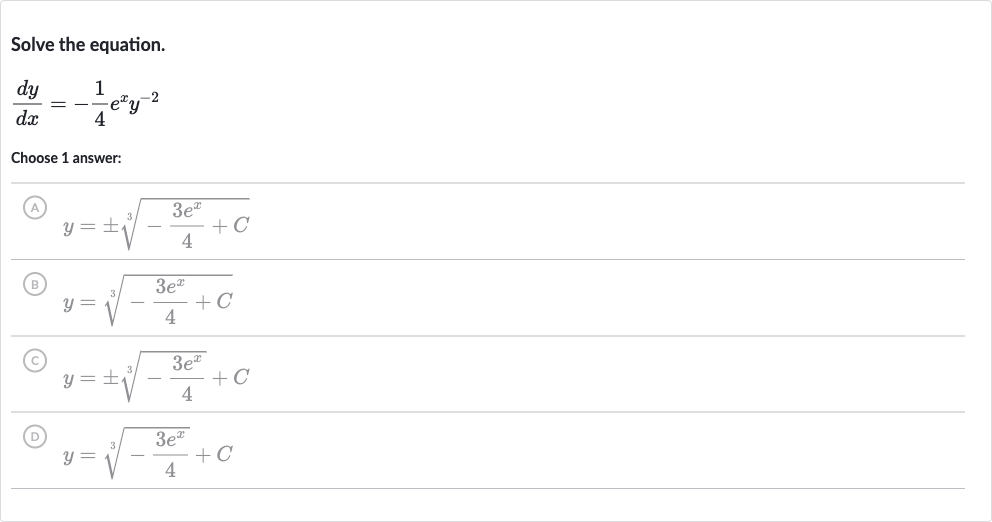AI tutor
Full solution
Q. Solve the equation.Choose answer:(A) (B) (C) (D)
- Separate variables: We are given the differential equation . This is a separable differential equation, which means we can separate the variables and on different sides of the equation.
- Multiply and integrate: To separate the variables, we multiply both sides by and to get .
- Integrate both sides: Now we integrate both sides of the equation. The left side with respect to , and the right side with respect to .
- Simplify and rename constant: The integral of with respect to is . The integral of with respect to is . So we have:, where is the constant of integration.
- Take cube root: We multiply through by to get rid of the fraction on the left side:We can rename as a new constant, let's call it :
- Final solution: To solve for , we take the cube root of both sides:This matches answer choice (A), which is .

